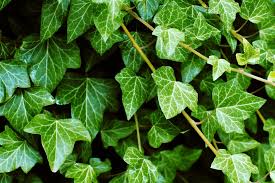Tenacious Ivy Ivy Hedera helix ( Latin) Gort (Ogham)
Greenest of pastures is Ivy. Greener than grasses, sweeter than pastures due to it’s associations with cornfields. Pleasing oil, corn. Size of a warrior. Book of Ballymote 1391 Ivy warns us if difficult times approach but also to rise above them and search for the ultimate truth through a more focused approach without restricting and binding us to any one concept. To love Ivy or not seems to be a big question, it seems to have a sinister deadly reputation alongside a positive deeply loved one. ‘Gort’ its Gaelic Ogham name originally meant ‘green field’ and early Celtic nature poetry speaks of its enduring quality, growing green and fresh amongst the highest canopies of the trees. Further works associate ivy with pleasing oil and sweet grasses, a plant that warns us of dangers and gives us direction and insight. Ivy became a Christmas decoration hung on doors, beams and fire places protecting the house from malicious spirits that cause havoc at this time. In Scotland Ivy was said to protect cattle and their milk from harm and in Shropshire cups were made from the lower stems of ivy which were used to give milk to infants and therefore protect them from whooping cough. However the other side of ivy cannot be denied as early scholars describe it as ‘size of a warrior’ as its thin wiry stems grow into trunks and climb to the greatest heights. Does it restrict, bind and suffocate its host? As early as the 3rd Century BC Theophastrus declared ivy an evil plant that harmed its host, yet the latest research has backed the romantic Celtic poets and the later Bishop Munt of the eighteenth century who praised it with great devotion. The research has shown that ivy will only grow on large canopy trees and dominate them when they are already dying back even demonstrating that if the tree should recover the ivy will pull back therefore proving a harmonious symbiotic relationship with its host! Our ancestors could not deny the incredible tenacious, raw survival qualities of ivy. It was used as a penalty for the farmer bringing in the last harvest as it was bond around a figurine then given to the farmer as a symbol of ill luck. The ivy girl of folklore was a shrewish wife, a meddlesome women causing trouble. The ivy that I truly love has autumn greenish-yellow flowers that secrete an abundance of nectar pollinated by wasps and flies etc… Birds feed upon the late berries when food is scarce and especially the holly blue butterfly caterpillars feed upon its leaves. Medicinally a brew of fresh leaves boiled in vinegar will soothe a stitch or headache and the leaves freshly picked can be used to clean wounds and sores. The leaves and berries powdered can be used as a snuff for blocked noses and stuffy heads. If you wish to learn more please subscribe to our monthly newsletter or join us on a course where we can soak up the beauty and learn a deeper appreciation.
0 Comments
Leave a Reply. |
Details
Poetry of flowersJoin me to explore the flora of the British Isles on this blog. My intention is to attempt to capture the unique quality and beauty of each species of flower, tree or shrub. For every species featured I will be growing many more wildflowers to celebrate the joy of their existence, their intrinsic conservation value and bewildering array of uses. For nearly 30 years I have noted, studied and explored wildflowers in the field much to the patience of the walker beside me. To share this passion is a heartfelt plea to respect, preserve and care for all British Wildflowers no matter how common they seem. Archives
February 2024
Categories |


 RSS Feed
RSS Feed
